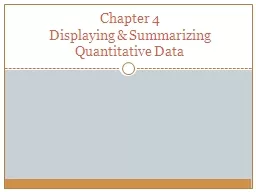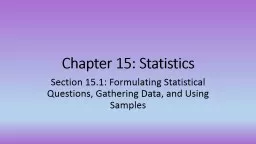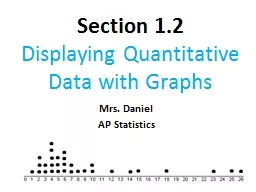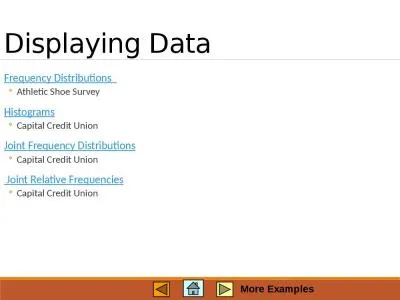PPT-Displaying Data
Author : cheryl-pisano | Published Date : 2016-03-08
Cal State Northridge 320 Andrew Ainsworth PhD Procedures for Displaying Data The variable scores on a 60 question exam for 20 students 50 46 58 49 50 57 49
Presentation Embed Code
Download Presentation
Download Presentation The PPT/PDF document "Displaying Data" is the property of its rightful owner. Permission is granted to download and print the materials on this website for personal, non-commercial use only, and to display it on your personal computer provided you do not modify the materials and that you retain all copyright notices contained in the materials. By downloading content from our website, you accept the terms of this agreement.
Displaying Data: Transcript
Download Rules Of Document
"Displaying Data"The content belongs to its owner. You may download and print it for personal use, without modification, and keep all copyright notices. By downloading, you agree to these terms.
Related Documents














